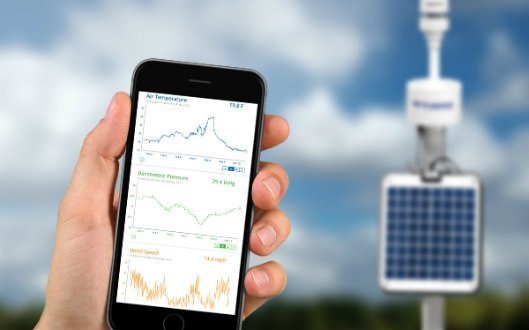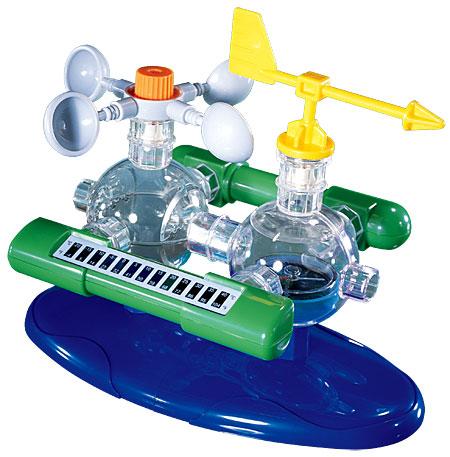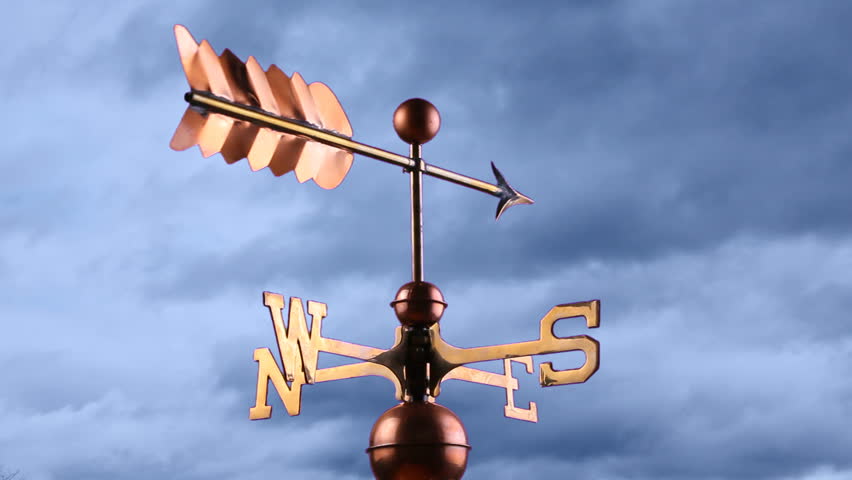
How To Precisely Measure Wind Speed: Anemometers
by Eva McQueen | May 12, 2021 | Guides, Instruments
If you are interested in weather updates & want to know how to measure wind speed then understanding anemometers is valuable. Wind speed determines how soon a storm will arrive and how it affects the creation of high and low-pressure areas. Measuring wind speed is an important factor when piloting a plane or conducting an outdoor athletic activity.
What Measures Wind Speed?
Wind speed is measured by using an instrument called the anemometer. The unit of anemometer is FPM or feet per minute.
An anemometer has has five basic types. These are, Mechanical Anemometer, Pressure Tube Anemometer, Thermal Anemometer, Sound Wave Anemometer and Doppler Laser Light Anemometer.
Each type has its own subcategories along with advantages and disadvantages. These characteristics make each type ideal for measuring wind speed in particular situations.
We have included photos of each type in case you’re wondering; “what does an anemometer look like?”
Types Of Anemometers To Measure Wind Speed:
1. Mechanical
2. Pressure Tube
3. Thermal
4. Sound Wave
5. Doppler Laser Light
1. Mechanical Anemometers
These anemometers are among the oldest and most popular, so how do they work? They operate by simply having the wind push on them and then measuring angles or rotations.
Mechanical Anemometers comes in three types.
- Plate Anemometers
- Cup Anemometers
- Propeller / Vane Anemometers
Plate Anemometers
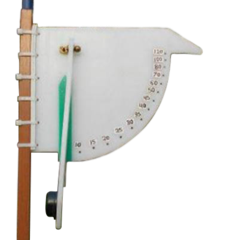
The oldest form of what measures wind speed. These simple meters were invented by Italian architect Leon Battista Alberti in 1450. They use a plate mounted on a strip of springy metal which is faced into the wind. As wind speed increases, the plate is lifted and bent back. The change in angle of the hanging rod is measured and corresponds to wind velocity.
As you could imagine, this type of anemometer is not very accurate due to many factors. Think low wind speeds and deterioration of the plate and springs over time. A variation of this consists of attaching a ping pong ball to a string and determining wind velocity by the angle of the string as the wind pushes the ball.
Cup Anemometers
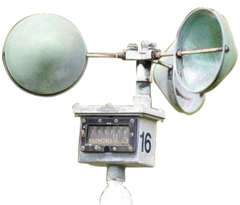
The classic image of four cups rotating around a vertical pole was made possible by inventor Dr John Thomas Romney Robinson in 1845. Originally, the device would measure wind speed by counting the number of cup rotations over a time interval.
This technique was improved by the use of electronics for measuring purposes. Electrical components can either provide greater accuracy in counting rotations per time unit or act as a small generator that creates higher wattage as wind speed increases.
Propeller / Vane Anemometers
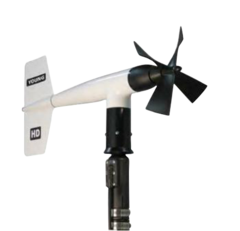
The use of a fan permits wind direction to be simultaneously determined with wind speed. The vane with the turbine has to be facing into the wind else the whole machine will rotate.
A handheld wind speed meter using a miniature fan has an advantage over its larger cousin. Since you’re the one doing the pointing, it will always be facing into even the lightest wind . Also, because it’s not permanently outdoors, a handheld wind speed meter isn’t threatened by winter icing.
Vane anemometers give users choices of units of measurement: m/s, ft/min, km/h, MPH and knots to accommodate different types of applications.
2. Pressure Tube Anemometers
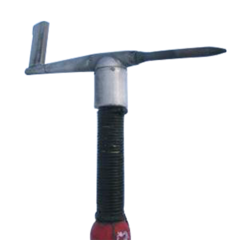
Another very old approach to measure wind speed is through the use of a pressure tube. First developed by James Lind in 1775, the basic idea is to start with a U-shaped tube and bend one end over to create a horizontal section. This piece will face into the wind. Liquid is placed into the tube and wind blowing into the horizontal portion will force the liquid up along the vertical section.
Modern versions have replaced the liquid with a flexible membrane. This moves in response to pressure differences, while a gauge translates this into wind speed. With no mechanical parts, this instrument for measuring wind speed can go for long periods without maintenance.
3. Thermal / Hot Wire Anemometers
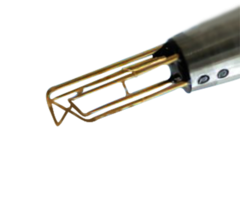
These thermal measuring devices are also known as hot wire anemometers. You start with the underlying principle that a flowing wind cools things off.
The device includes a thermostat that keeps a heated wire at a steady temperature. So, as the wind blows across the wire, it’s cooled and more electricity is used to bring it back up to its set temperature. The increased draw of electricity is what measures wind speed.
4. Sound Wave Anemometers
Types of sound wave anemometers to measure wind speed:
- Ultrasonic Anemometers
- Acoustic Resonance Anemometers
Ultrasonic Anemometers
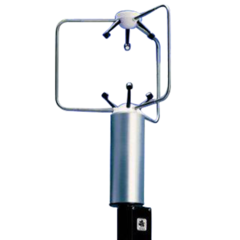
Because sound needs gas molecules to travel through, their speed and direction can affect the speed of the sound waves. Ultrasonic anemometers use this phenomenon to calculate wind speed. They compare the travel time between a sound generator and a receiver to what it should be under no wind.
The big drawback here is that turbulence created by wind flowing around the instrument itself can distort the results. Rainfall can also play havoc with readings.
Acoustic Resonance Anemometers
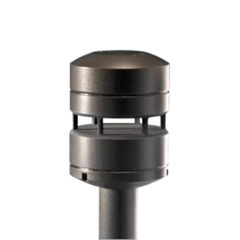
While it also uses sound waves to measure wind speed, this instrument takes a different approach. It measures changes in the frequency of the waves as they collide with passing air molecules. Faster winds will cause the sound waves to compress into a higher frequency.
These anemometers are compact and very rugged however, they are not that accurate.
5. Doppler Laser Anemometers
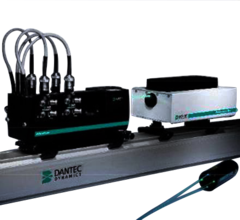
This system relies on the same principals as an ultrasonic anemometer. The difference is that laser light is what measures wind speed.
The laser beam is split in two. One portion is used for reference while the other is aimed at the wind. If the air is rushing towards the measuring beam, the light waves reflecting off it are squeezed into a higher frequency. This is referred to blue shifting.
Laser light bouncing off air particles headed away from the detector undergo red shifting to a lower frequency. The receiving station compares this reflected light to the reference beam to calculate the speed of the moving air.
This instrument to measure wind speed is extremely accurate as well as very expensive. It also requires a lot of technical expertise to operate.
Many Choices To Measure Wind Speed
Clearly, there’s a lot of ways you can use to measure wind speed.
Keep in mind that some methods may not be very reliable. Others can be pretty costly and may involve unwieldy contraptions.
“What tool measures wind speed the best?” In our opinion, it comes down to cup anemometers for personal weather stations and handheld anemometers. These portable devices are accurate measures for wind speed anywhere you go. They are affordable, reliable and durable.
To read more on anemometers, try our 6 Best Anemometers For Every Need In 2021
















![Meteorologist Street - Occupations - Street Sign [ Decorative Crossing Sign Wall Plaque ]Q](https://m.media-amazon.com/images/I/21pKie0lHDL._SL160_.jpg)
